- Announcements
- BBQ and Food
- Cars
- Computing
- Cool Stuff
- Current Events
- Electric Vehicles
- Electronics
- Energy
- Flashahaulism
- Funny
- Government
- Hints and Tips
- History
- HVAC
- Induction heating
- Internet
- Lighting
- Misc
- Neon and other lighting
- Nuclear
- Personal
- Pets
- Philosophy
- Photography
- Power Generation
- Product Reviews
- Projects
- Q and A
- RV/Camping
- Science
- Tellico
Categories
Blogroll
 Print This Post
Print This Post
Using the Induction Heater – Aluminum Melting Part 2
PermaLinkThe Kitchen Foundry
In part one I documented the construction of the Kentucky Fried Foundry, designed to melt small batches of aluminum using our Fluxeon® Roy induction heater. In this instalment I document the furnace’s use.
This shows the overall setup of the Kitchen Foundry. From left to right
- Power meter to measure the energy consumption
- Stuff to be melted
- The Hobo 4 channel thermocouple data logger
- The Roy 2500 induction heater with laptop on top
- Induction range with a batch of Southern iced tea brewing
- The furnace.
Notice that the furnace is sitting on a lightweight fire brick (LFB) supported with some kiln furniture. Notice that the kiln furniture provides plenty of air space between the LFB and the range top. That is very important, as I’ll show you later.
The Roy 2500 will operated from either 120 or 240 volts. This prototype has a 120 volt cord on it so I constructed a fully code compliant :-) 240 to 120 adaptor so that the Roy could be powered by 240 volts for this run.
The Onset Hobo data logger. This nifty and inexpensive logger has enough memory to take a sample every second for several days.
Something interesting to note here. All 4 thermocouples are at the same temperature and yet there’s almost a 6 deg disparity between readings. And note that the last plug is barely engaged. That’s because it is so out of tolerance that it would have broken the socket had I forced it in. The first thermocouple is a high quality high accuracy thermocouple from omega.com . The second one is made of thermocouple wire but has been abused by high temperature use. The third and forth ones are cheap ChiCom units from sleazebay. Note the blue spiral around the wire. The spiral designates thermocouple extension cable. This is a cheaper, low tolerance wire that is designed to carry the signal from the actual thermocouple to the readout device. Here they’ve used it to try to make actual thermocouples. Problem is, TC extension cable is typically spec’d at ±10 deg F while a quality TC wire will typically be better than ±1 degree. I used the cheap chicom ones because I was out of quality ones. Good enough for this experiment.
For this run I was also evaluating a new cooling system for the Roy 2500. So I was measuring the temperature at several strategic places inside the case plus the case pressure generated by the cooling fan.
This is a micromanometer. It is capable of measuring air pressure to 0.001″ of water. It is extremely handy for verifying the cooling air paths and pressures inside a sealed enclosure. Its operation is simple. In the rear is one AA cell. This cell is connected in series with the ON/OFF switch and a current limiting resistor. Then one lead connects to the water solution and the other to the micrometer head. The micrometer head has a tapered needle on the end.
With no pressure on the manometer, the micrometer is adjusted until some reading is obtained on the meter and noted. Then pressure is applied and the micrometer is adjusted upward until the meter returns to the same place as before. The pressure is the difference between the two micrometer readings.
This is a very expensive instrument but when designing compact, high power devices, it is invaluable for measuring pressures and flows at various points within the enclosure. This photo should allow any enterprising experimenter to make one of his own.
This is an important detail. The copper wire isolates the heat of the induction coil coming from the furnace from the Roy leads. Initially we had each one immersed in a container of water but we quickly realized that air cooling was sufficient.
This is what happens when the connector isn’t tightened well enough. The heat pretty much destroyed the connector.
Charging the furnace for the first melt.
Here is the first melt melting. From cold to 5 lbs of metal melted took about 15 minutes.
Unfortunately a crack opened in the Kast-O-Lite. It wasn’t supposed to do that but it did. We followed the curing and heat-up schedule to a tee but it still cracked. The good news is that it did not grow. In fact, after we put a large worm drive pipe clamp around the furnace, the crack practically closed. In any event, the crack did not affect the operation of the furnace.
Here’s the crucible almost full of aluminum.
And here it is with the lights off
So the furnace works but it needs several improvements.
The first improvement is the refractory. The Kast-O-Lite is heavy and relatively highly thermally conductive and with a large thermal mass. The outside of the furnace reached temperatures in the 500 deg F range. While I can pick up the furnace to make a pour using heavy welding gloves, I’d much rather the surface remain at near room temperature. And I’d like it to be much lighter than it is now.
We’re working with our supplier, Larkin Refractory  to come up with a more suitable refractory. It will probably be one of the foamed refractories. These are lightweight yet strong, have low thermal conductivity and little thermal mass. That should cut the melt time by at least a third.
Cautions
Not much here. Frankly I’m tired of the safety nannies splattering every thing and every activity with pages of warnings. If you don’t realize that red hot molten metal can be dangerous and can cause fires then you need to spend some time researching the subject on the web. I assume my readers have already done that.
Some folks might get their panties in a wad about doing this in the kitchen. In reality, the kitchen is one of the safest places to melt aluminum. The stove top is inherently fire-proof. If the worst were to happen – the crucible rupture and molten metal spill out – the metal would land on the porcelain, then run down through the burner openings to find more metal and fiberglass insulation. If one lacks a good outdoor place to do this, the stove or maybe the fireplace (if it’s real) are the best places to work.
We do the pouring on the floor. A sheet of stainless steel is placed on the vinyl and on top of that is a thick bat of FiberFrax. On top of that rests the mold.
Also not shown in the photographs are a large fire extinguisher and a bucket of water. The water is there to quench any metal that might escape the Frax and reach the floor. These precautions are just plain old common sense.
Next I want to illustrate something that is not immediately apparent. Refractory can store a lot of heat energy within its mass and if it is an insulating refractory, it will take a long time to work its way through the material. Let me demonstrate an example.
This was our very first attempt to melt aluminum with the Roy. A cut-off propane cylinder, some LFBs and under it all, a hunk of refractory hard board. This actually worked quite nicely.
Here is the crucible a couple of hours later. I had set a fan to blowing on the assembly so both the crucible and the top of the hard board were at room temperature.
My friend Matt went to bed but out of an abundance of caution, I decided to sit up awhile longer and kill some time on Youtube. You can see the orange spritzer bottle in the background. That became very important later.
A couple of hours into my Toobing, I smelled smoke and went into the lab to find my bench on fire. I used the spritzer bottle full of water to put out the fire and then investigated. This is what I found under the hardboard.
The heat wave had worked its way out the back side of the refractory and had set the bench on fire. This happened a full 4 hours after the heat was turned off and the fan applied.
Some air space between the hard board and the bench would have completely prevented this. As would have taking the crucible and refractory outdoors after we finished our experiments.
Let our experience be your lesson learned.
—
Posted by neonjohn on November 9th, 2014 under Cool Stuff, Electronics, Induction heating, Projects
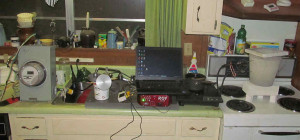
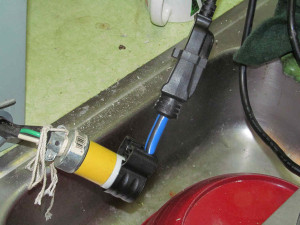
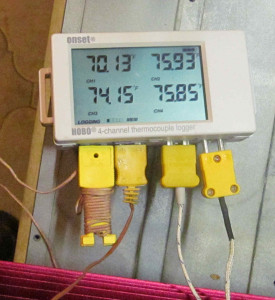

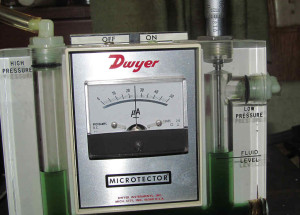
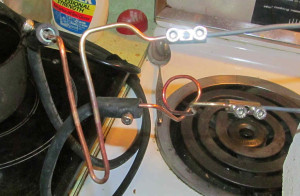
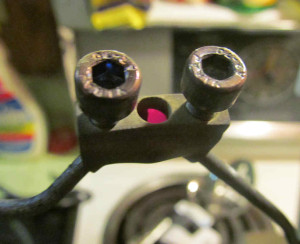
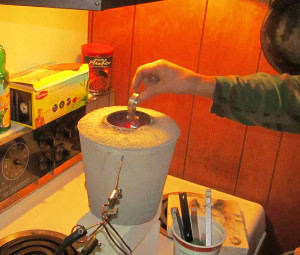
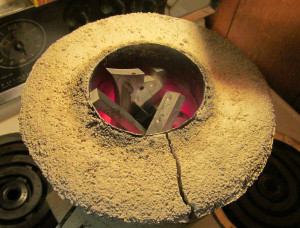
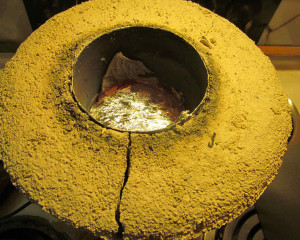
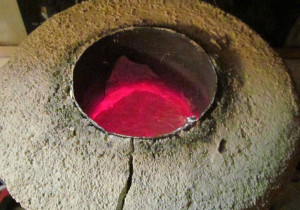
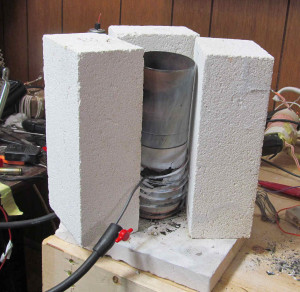
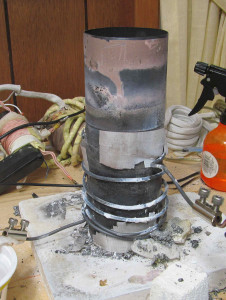
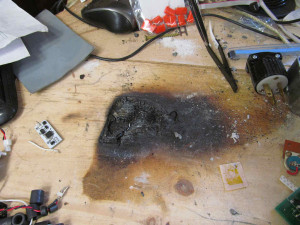
January 30th, 2015 at 12:20 am
Hey John, since you’re melting aluminum, here’s something artistic to do with the melt. Helps the environment too.
http://youtu.be/IGJ2jMZ-gaI
January 30th, 2015 at 4:41 am
Hey Bruce,
That’s exactly what I have in mind after I get my 20 lb furnace finished. I’ve already picked out the nest.
John
January 30th, 2015 at 7:21 pm
Visions of Pompeii and Herculaneum come to mind …